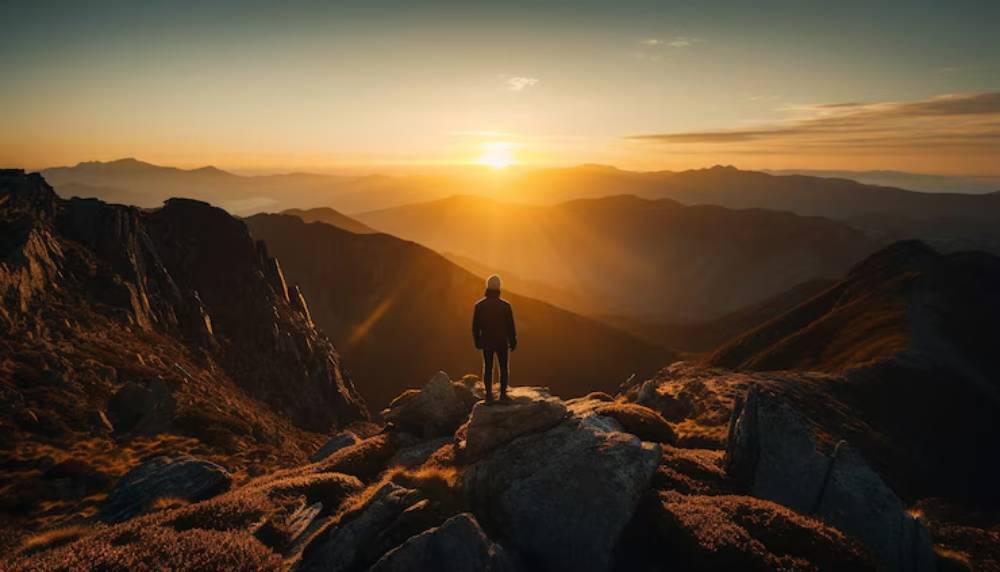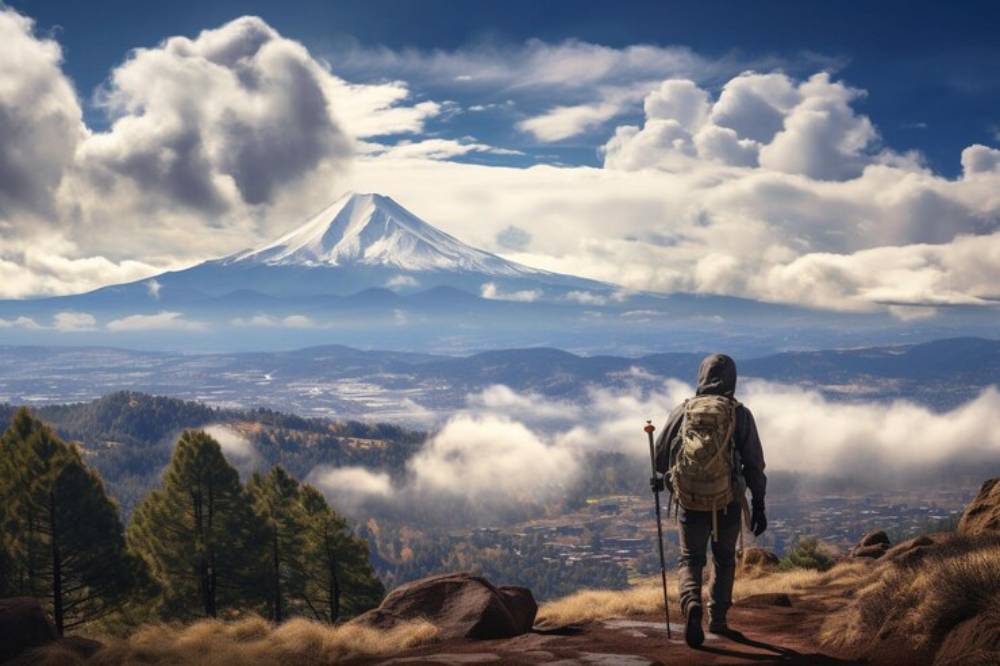The Travel Blog
Hiking Mount Fuji: Japan’s Iconic Peak Adventure
Conquering the Sacred Summit of Japan
There are a few adventures that are symbolic and soul-stirring, such as hiking Mount Fuji. Towering at 3,776 metres, Fuji-san is Japan’s highest mountain and arguably its most iconic. A near-perfect volcanic cone, it’s not just a UNESCO World Heritage Site — it’s a spiritual pilgrimage, a rite of passage, and a bucket-list goal for thousands of travellers from around the world.
But climbing this mighty stratovolcano is not a casual stroll. It’s a challenging, exhilarating, and deeply rewarding experience that blends natural wonder with cultural significance. If you’re drawn to volcano treks in Japan or seeking mountain adventures in Asia, Mount Fuji offers one of the most awe-inspiring trails you can tackle.
In this guide, we’ll unpack everything you need to know before you lace up your boots — from choosing the right trail and gear to coping with altitude and savouring the summit sunrise. Let’s ascend.
Why Hike Mount Fuji?
A Symbol of Japanese Identity
Mount Fuji isn’t just Japan’s tallest peak. It’s a sacred mountain steeped in Shinto and Buddhist traditions. Its symmetrical beauty has inspired centuries of poets, painters, and pilgrims.
Accessibility
Unlike many high-altitude treks, Fuji is relatively accessible. It’s just a couple of hours from Tokyo and has well-marked trails with facilities.
Unique Volcanic Terrain
Mount Fuji is an active volcano. Its trails feature surreal black lava rock, ash-strewn switchbacks, and panoramic views that stretch to the sea on clear days.
When Is the Best Time to Climb?
Official Climbing Season: July to Early September
This is when the mountain trails are fully open, the weather is most stable, and huts are operational.
Avoid Off-Season Hikes
While technically possible in other months, climbing outside the season is risky. Snow, sub-zero temps, and closed huts make it suitable only for experienced mountaineers.
Choosing Your Trail: The 4 Main Routes
1. Yoshida Trail (Most Popular)
- Starts at the 5th Station on the Yamanashi side
- Well-maintained with many huts and amenities
- Best for first-time climbers
2. Subashiri Trail
- Less crowded
- Joins the Yoshida Trail near the summit
- Beautiful forested section at the base
3. Gotemba Trail
- Longest and least crowded
- Starts at the lowest elevation
- Great for a full-day fitness challenge
4. Fujinomiya Trail (Shortest Route)
- Steep and direct
- Starts from the Shizuoka side
- Ideal for strong hikers with limited time
Each trail starts from a different 5th Station — a halfway point with parking, buses, and basic facilities.
What to Expect on the Trail
Altitude and Weather
As you climb, oxygen levels drop. Many climbers experience altitude sickness, which can include headaches, nausea, and fatigue. Go slow and hydrate often.
The weather can change rapidly. Even in summer, temperatures at the summit hover around 0°C. Rain and wind are common.
Trail Features
- Switchbacks cut through volcanic scree
- Torii gates mark spiritual significance
- Mountain huts offer food, shelter, and toilets
Don’t expect lush forests or alpine meadows. Fuji is raw, barren, and lunar-like in its upper sections.
Sunrise Summit: The Ultimate Reward

Why Start the Climb at Night?
Many climbers opt for a night hike to catch Goraiko — the sunrise from the summit. It’s otherworldly.
You can either:
- Climb through the night from the 5th Station
- Stay overnight at a mountain hut and ascend early in the morning
The first rays of the sun breaking through the clouds above Japan are a memory that stays with you for life.
Packing Essentials for a Safe Climb
Clothing:
- Layered base, mid, and outerwear
- Waterproof jacket
- Warm gloves and a hat
Gear:
- Trekking poles
- Headlamp with spare batteries
- Backpack with rain cover
Other Must-Haves:
- Cash for huts (many don’t take cards)
- Water (at least 2L)
- High-energy snacks
- Sunglasses and sunscreen
Optional but Helpful:
- Oxygen canister for altitude relief
- Earplugs (for sleeping in huts)
Staying in a Mountain Hut
What to Expect:
- Thin futons in shared sleeping areas
- Basic hot meals (like curry rice or miso soup)
- Friendly staff and climber camaraderie
Booking Tips:
- Reserve in advance, especially in August
- Most huts cost 6,000 to 9,000 yen per night
- Lights out around 8 pm
Huts add comfort, culture, and crucial rest to your climb.
Safety and Etiquette
Health and Emergency Tips:
- Know your limits; turn back if symptoms of altitude sickness worsen
- Follow trail markers and don’t veer off
- Carry a mobile with a GPS app like YAMAP or maps.me
Cultural Respect:
- Quietly pass shrine areas and torii gates
- Don’t litter — carry out everything you bring in
- Greet fellow climbers with a cheerful “konnichiwa”
Post-Hike Recovery: What to Do After the Climb
- Soak in an Onsen: Hot springs like Fujiyama Onsen soothe sore muscles
- Try Hoto noodles: A regional dish perfect for refuelling
- Visit Fuji-Q Highland: For a completely different kind of adrenaline
You’ve earned some indulgence.
For more on high-altitude prep, read How to Train for High-Altitude Adventures .It’s packed with conditioning tips that apply to Mount Fuji and beyond.
Real Stories: Voices from the Trail
“I thought I’d only make it halfway, but something about the stars and that moonlit trail pushed me on. The sunrise was unreal.” — Alex, Australia
“We booked a hut and started the summit push at 2 am. Freezing cold, but worth every second.” — Kana, Tokyo
“I cried when I reached the top. It was more than a climb; it felt like a personal triumph.” — Marcus, UK
These moments make Fuji more than a mountain — they make it a story.
Climb with Purpose: Sustainability and Sacredness
Mount Fuji is not just a hiking destination — it’s a spiritual and environmental landmark that deserves respect. With increasing popularity, preserving the mountain’s fragile ecosystem is more important than ever.
Eco-Friendly Practices:
- Use designated trails only to prevent erosion of volcanic soil.
- Carry out all trash, including wrappers and tissues — leave no trace.
- Avoid loud music or shouting — this is a sacred site for many.
- Bring a reusable bottle to minimise plastic waste; water is available for purchase at huts but is brought in at cost to the environment.
Support Local Efforts:
- Consider donating to the Mount Fuji Conservation Fund.
- Book huts or guides from local operators — it supports the economy and protects traditions.
- Learn a few Japanese phrases — a small gesture that shows big respect.
Fuji Beyond the Climb: Cultural Side Trips
Make the most of your Fuji pilgrimage by exploring nearby cultural treasures:
- Fujisan Hongu Sengen Taisha Shrine: A beautiful starting point to understand the mountain’s sacred role in Shintoism.
- Oshino Hakkai: A peaceful village with eight spring-fed ponds, offering a glimpse into traditional rural Japan.
- Mount Fuji World Heritage Center (Shizuoka/Yamanashi): Offers insight into the natural and spiritual significance of the mountain.
These experiences add richness to your adventure, making it not just a climb, but a connection.
Combine It with Other Adventures
Don’t stop with just one volcano.
- Try Volcano Boarding in Nicaragua: Sliding Down Cerro Negro if you’re a fan of fiery peaks.
- Explore Mount Aso or Sakurajima for more Japanese volcanic hikes.
- Pair your Fuji trip with cultural gems like Kyoto or Takayama.
Adventure and heritage go hand in hand.
Conclusion: Your Journey to the Top

Hiking Mount Fuji is more than a physical challenge — it’s a spiritual and emotional journey wrapped in ash and cloud. It teaches patience, perseverance, and reverence for nature and culture.
Whether you’re chasing sunrise magic, testing your limits, or simply ticking off a dream destination, this iconic peak delivers an experience you won’t forget.
So, will you make the climb? Drop a comment, share your story, or tag a friend who needs this mountain in their life.









